
Here's How It Felt to Discover Gravitational Waves (Kavli Hangout)
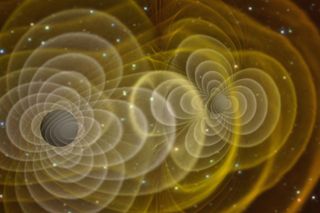
Adam Hadhazy, writer and editor for The Kavli Foundation, contributed this article to Space.com's Expert Voices: Op-Ed & Insights.
When Rainer "Rai" Weiss and colleagues first proposed an audacious experiment to detect ripples in space-time, called gravitational waves, in the late 1970s, they knew the whole endeavor was a long shot. The waves the researchers sought would pull and stretch their detector by mere billionths of a billionth of a meter — a scarcely believable signal to try to extract from nature.
Now, four decades later, millions of people worldwide have read about the historic detection of gravitational waves as the result of Weiss and his fellow scientists' efforts: the Laser Interferometer Gravitational-Wave Observatory (LIGO). The revolutionary gravitational wave findings have thrown open the door to a whole new way of studying the universe's most extreme events and its most massive objects.
At the U.S. National Science Foundation's LIGO announcement in Washington, D.C. last week, Weiss called it "a miracle" that the equations first predicting gravitational waves — which Albert Einstein wrote a century ago — work so well in describing the black hole system LIGO found. "It is just amazing," he said, adding that he'd "love to be able to see Einstein's face right now" when the physicist's name came up in a recent Kavli Foundation roundtable.
Below is a complete transcript of that roundtable, with Weiss joined by two other LIGO researchers, all members of MIT's Kavli Institute for Astrophysics and Space Research. Nergis Mavalvala has focused on developing LIGO's precision instruments (and has become a celebrity scientist in her birthplace of Pakistan since the discovery was announced). Matthew Evans has worked on the modeling and control of large interferometers including LIGO.
Below, read their far-ranging conversation about the ramifications of LIGO's discovery and what more is in store in the dawning era of gravitational wave astronomy. The following is an edited transcript of the roundtable discussion. The participants have been provided the opportunity to amend or edit their remarks.
The Kavli Foundation: What does it feel like to have made this discovery? Rai, because you're one of LIGO's creators and someone who has pondered how to detect theses waves since the 1970s, let's start with you.
Get the Space.com Newsletter
Breaking space news, the latest updates on rocket launches, skywatching events and more!
Rai Weiss: You're not going to like my answer — I feel like a monkey just jumped off my back! But the monkey's not gone yet, he's still walking along here on the sidewalk. We've got more to do. At least some of the guilty feelings that might have come from having dragged all these people along for decades hunting gravitational waves and maybe ruined their careers isn't happening. So I am very pleased.
Matthew Evans: If Rai had dragged us all toward our doom, it certainly would have been his fault. [Laughter] I hope he recognizes that he didn't.
Nergis Mavalvala: It's been a real joyride for decades and this is the pinnacle. It's been amazing to be involved in the science and technology of this effort regardless, and this discovery just makes it all really worthwhile. I don't think any of us ever feared we were being dragged to our doom. [Laughter] We were just on this great joyride where we didn't know where we might end up.

TKF: This discovery of gravitational waves has been a long time in the making and required a lot of patience. Were you all actually surprised, then, at how quickly the detection was made after Advanced LIGO began operating back in September?
Mavalvala: Yes.
Evans: Very pleasantly surprised.
Weiss: It's amazing. The signal is bigger than we ever imagined it would be.
Mavalvala: We had thought the first signal would be some little small thing poking up out of the noise and we'd have to work really hard to understand what it was. But in fact, the signal we got is a very clean and beautiful event. It tells us that the binary black holes were located about 1.5 billion light years away. They whirled around each other at nearly the speed of light before a collision that was so powerful, it converted approximately three times the mass of the Sun into gravitational wave energy — in just a few tenths of a second!
TKF: Two years ago, the BICEP2 Antarctic telescope project announced evidence for the signature of gravitational waves in light from 380,000 years after the Big Bang. But that major result came into question in early 2015 when other data suggested cosmic dust is a likelier source of the signature. Do you have any concerns about these LIGO findings?
Evans: I don't have any concerns about that. I've gone through the instruments from one end to the other and I couldn't find anything that might have gone wrong. But the LIGO Scientific Collaboration, which is the umbrella organization for all the international institutions and scientists involved in this, is very well aware of the history. So the collaboration as a whole has been extremely careful to make sure this discovery is solid.
Weiss: The signal is so pretty, many of us worried at the time that it was something done maliciously. Matt and others crucially established that the signal is unlikely to have been generated by a hacker and much more likely by nature.
Mavalvala: The other possibility was that the instruments were misbehaving, but we've gone through a very, very detailed study and eliminated that as a possibility.
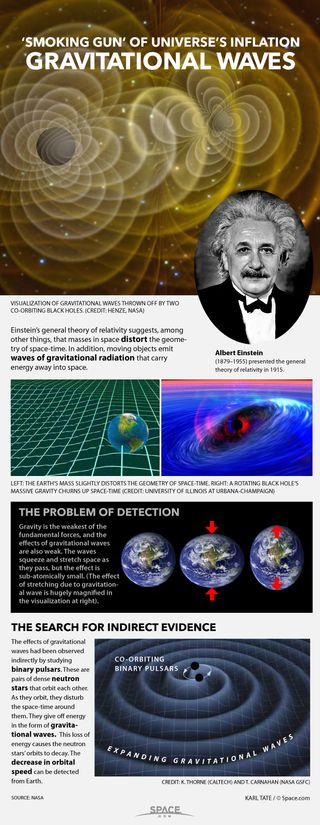
Weiss: There's one other piece of evidence — LIGO has detected more than one of these gravitational wave signals. That to me is a very important piece of the whole thing. Nature seems to behave as we would have expected, which is that it has produced not only a very powerful gravitational wave source like what we have detected and are talking about now, but also a not-so-powerful one of the same kind.
Evans: Another thing really important to say in contrast to previously declared discoveries of gravitational waves is that we have multiple detectors running simultaneously which detected the same signal. At each site, we have literally thousands of auxiliary channels and sensors looking for any sort of external disturbance and everything checks out.
TKF: What do you think are the biggest ramifications of this discovery?
Weiss: For many of us, this is the signal that we wanted to see from the beginning of this whole quest. We wanted to see gravitation à la Einstein and his theory of general relativity and which cannot be explained by any Newtonian mechanisms. The history of general relativity as a science is actually rather dismal. It was mostly theoretical work for many, many years. Then there was a renaissance in the 1960s when people began to realize that maybe the technology had changed enough that you could start doing experiments to test Einstein's theories. But then physicists ran into this really horrible problem that all the things that they could test were these infinitesimal effects. The bending of light, for example, is a pipsqueak effect. Or the slowing down of clocks in the gravitational field.
Now all of sudden with LIGO, we're dealing with a regime where Einstein's equations had never been applied before. With these colliding black holes , general relativity gives you the right answer, which is miraculous. That is the reason why this is such a big deal. Einstein never expected this kind of test of his theories to happen this way because the effects we're looking for are so vanishingly small. I keep telling people I'd love to be able to see Einstein's face right now!
Mavalvala: Another thing that's really remarkable is our ability to observe a binary black hole system with LIGO that we could not have observed with light. We could point the best telescopes, sensitive to more or less any electromagnetic wavelength of light, at this system and probably see nothing. We cannot observe this system with any of the other fundamental forces of nature. It has to be gravity.
If the signal LIGO had detected had been, say, neutron stars colliding and not black holes, we would have had no complaints, but there's probably a very good chance you could see neutron star mergers with other, conventional observational tools relying on light. In fact, we believe that certain classes of gamma ray bursts are just that. So what we have here in the findings we're announcing today is very important, in my opinion, because it's a completely dark-to-light system.
Evans: To me, this detection means that the stars are no longer silent. The frequencies of gravitational waves that LIGO is designed to detect are actually in the human audible range. So when we're working on LIGO, we often take its output and put it on a speaker and just listen to it. For this binary black hole system, it made a distinctive, rising "whoooop!" sound. It's not that we just look up and see anymore, like we always have — we actually can listen to the universe now. It's a whole new sense, and humanity did not have this sense until LIGO was built.
Weiss: We often whistled to demonstrate what we thought these smashing black holes might sound like, and it turns out if you play the piano or a keyboard, you can also make a similar sound. Do you know what a glissando is? It's when you run your fingers very quickly across the keys. If you started at the bottom of a keyboard and went all the way to the middle C and then hold that note for a little bit — that's what this black hole signal happened to be.
TKF: It's remarkable that the pattern or "sound" of gravitational waves detected by LIGO can reveal intricate details about the waves' sources. For instance, LIGO's data indicate that each black hole in this collapsing binary system had a mass of about 30 Suns. Until now, we've only known about much smaller black holes or supermassive black holes with masses of millions or billions of Suns. How will LIGO help us understand the origin of these never-before-seen, mid-size black holes?
Evans: Presumably, the existence of these 30 solar-mass black holes — and now after their collision, a nearly 60-solar mass black hole — will tell us something about what we call Population III stars. These are the earliest stars in the universe and are made almost entirely out of hydrogen. They are very massive and one of the plausible sources we've suspected for collapsing into these kinds of black holes.
Weiss: Another idea is that these black holes are made in places where there is a high density of many millions of stars, for example in globular clusters. You can maybe get stars to stick together there and collect and ultimately make a big black hole. There were papers even before our discovery that were beginning to hint that this is the more likely way to get these objects. Now that our findings are out, you watch — in the next year or two, there are going to be probably hundreds of papers about the origin of the black holes we're talking about. It's going to be the wave of the future.
Evans: The amazing thing at LIGO is that gravitational waves carry a tremendous amount of information about their source. As we get more and more of these detections, we'll even be able to tell how fast the black holes in these binary systems are spinning and if they are spinning in a way that's aligned. That data will let us decide whether these black holes came from a globular cluster or as a result of primeval Population III stars.
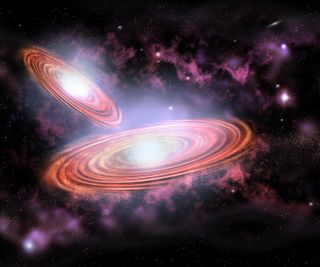
TKF: Turning our conversation to the LIGO observatories themselves — what technological advances did the black hole binary system discovery hinge on? Nergis, you were very involved in this aspect of the work, so please explain.
Mavalvala: To build one of these gravitational wave detectors — these laser interferometers — you really only need two ingredients. One, you need mirrors that are very, very still. Then two, you need a way of measuring any very small motions. So the name of the game is having ways to shield mirrors from external, non-gravitational wave forces and having laser lights precise enough that you can probe the tiny motions that are induced by gravitational waves. Once you have those two things, you have yourself a detector.
The changes that granted us more sensitivity during Advanced LIGO were vibration isolation systems that were better than in the previous generation. In a slightly jargon-y way, we don't use just passive isolation; we're also using active vibration isolation. The other thing we had to do was reduce the vibrations of the mirrors due to thermally driven fluctuations. Then finally, we put in a more powerful laser so that our signal-to-noise ratio improved. The list of technologies involved in these improvement is very long, but those are the broad-brush strokes.
TKF: Matt, part of your work involves figuring out the fundamental limits for LIGO and for future gravitational wave detectors. How much more sensitivity to gravitational waves can we achieve and why do we want to?
Evans: Putting first things first, we haven't really gotten the Advanced LIGO detectors working as well as they can be. We will in some time. We think we can get a factor of three times as much sensitivity as we have currently, which could bring ten times as many gravitational wave-producing events into LIGO's range. So we can expect a lot just from the Advanced LIGO detectors as we improve their function.
The next step we're looking at is actually something that Nergis has pioneered, and that's to use quantum optics in our detectors to reduce the quantum noise of the lights. Nergis talked about having lasers that were very precise and high-powered. But you can actually import techniques from a research field called quantum optics to try to reduce some of the randomness that's inherent to light. Then, we're looking farther into the future as to whether or not we can build detectors that are still another ten times more sensitive. That will probably involve a new facility and longer interferometers.
If you ask why we would want to do that, I think that we've just started this business. It looks like we have a lot of great physics and astrophysics we can do with these detectors. If we can make something ten times more sensitive, we'll be able to detect gravitational wave sources from anywhere in the universe.
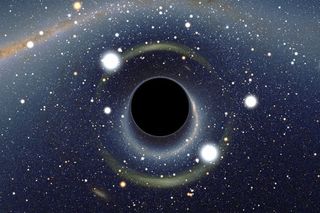
TKF: With an even more advanced LIGO, as well as future gravitational-wave observatories, what other phenomena in the universe will we get to understand in new ways?
Weiss: There is a whole spectrum of gravitational waves. With LIGO, we're looking for high-frequency waves. As to how high we can go, again, the piano analogy is a wonderful one. Because what we're looking for are sources that go from the bottom of the piano to the top of the piano. They don't stop at middle C, which is currently our detection limit with LIGO. They go higher.
Beyond that, a lot of people are working in other frequencies and other wavelengths where there are phenomena which LIGO will not see. For example, we talked earlier about the BICEP project, which is looking for signatures of gravitational waves affecting the relic radiation from the Big Bang, called the cosmic microwave background. Well, that's going to work someday, or it may be that a satellite has to do that observation. If there are gravitational waves from the first epochs of the universe, they're going to have periods, or cycles, that are stretched to on the order of the age of the universe itself, almost 14 billion years. So that's the lower limit to the spectrum.
For another example, there's a project that's been going on almost as long as LIGO called the Laser Interferometer Space Antenna Project, or LISA. It involves lasers beamed between spacecraft with baselines that are up to five million kilometers, not four kilometers, like LIGO's detection arms now, or even 40 kilometers like what Matt and Nergis want to do someday. LIGO can't touch LISA's detection spectrum, covering much longer wavelengths. With LISA, there's this wide open window with spectacular stuff in it, like binary white dwarf stars going around each other. Another is black holes with tens of thousands to hundreds of thousands of the mass of the Sun, either colliding or having objects bend their orbit around them. You could do very, very careful tests of general relativity with that. I hope these other areas get dragged along by our discovery.
TKF: Do you think there are any astrophysical objects in our galactic neighborhood that could unleash sizeable gravitational waves detectable by LIGO, or are all the major sources going to be far away?
Evans: I suggest that we hope that there's nothing close by. [Laughter] The binary black hole system we detected was 1.5 billion light years distant. That's very, very far away, and in terms of how much energy was released so quickly, it was the most powerful explosion ever observed. So I think you wouldn't want that in your neighborhood.

Mavalvala: But maybe not too close, just within our galaxy…
Evans: Well, a Milky Way event would probably saturate our detectors, but it's not like it could hurt us or anything.
Weiss: Well, I hope you're right about that! [Laughter] If we ever happen to be around when a supernova goes off, that would be as spectacular as what we have discovered now because we will see everything that is going on deep inside the supernova. Gravitational waves come right out. Nothing scatters these waves, which is the opposite of light that never gets out of the core of the explosion to tell us anything.
Evans: I hate to get peoples' hopes up for a supernova because they are so rare, but Rai is absolutely right. If we detect one in our galaxy, it would be a wonderful piece of physics.
Mavalvala: I'll add that I hate to get peoples' hopes up for things we don't even know how to articulate yet. We don't fully know what's out there with this new way of looking at the universe in gravitational waves. So it's possible that there will be things maybe in our own galactic neighborhood, maybe far away, or maybe both that are just things we have not thought about yet.
Evans: That's very true. We've heard the loudest possible thing you could imagine go off and we got it, but hey, we're just getting started.
Follow all of the Expert Voices issues and debates — and become part of the discussion — on Facebook, Twitter and Google+. The views expressed are those of the author and do not necessarily reflect the views of the publisher. This version of the article was originally published on Space.com .
Join our Space Forums to keep talking space on the latest missions, night sky and more! And if you have a news tip, correction or comment, let us know at: community@space.com.
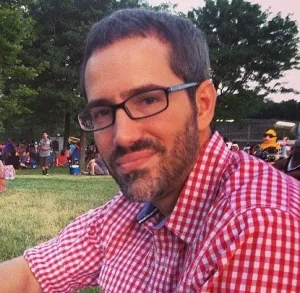
Adam Hadhazy is a contributing writer for Live Science and Space.com. He often writes about physics, psychology, animal behavior and story topics in general that explore the blurring line between today's science fiction and tomorrow's science fact. Adam has a Master of Arts degree from the Arthur L. Carter Journalism Institute at New York University and a Bachelor of Arts degree from Boston College. When not squeezing in reruns of Star Trek, Adam likes hurling a Frisbee or dining on spicy food. You can check out more of his work at www.adamhadhazy.com.
